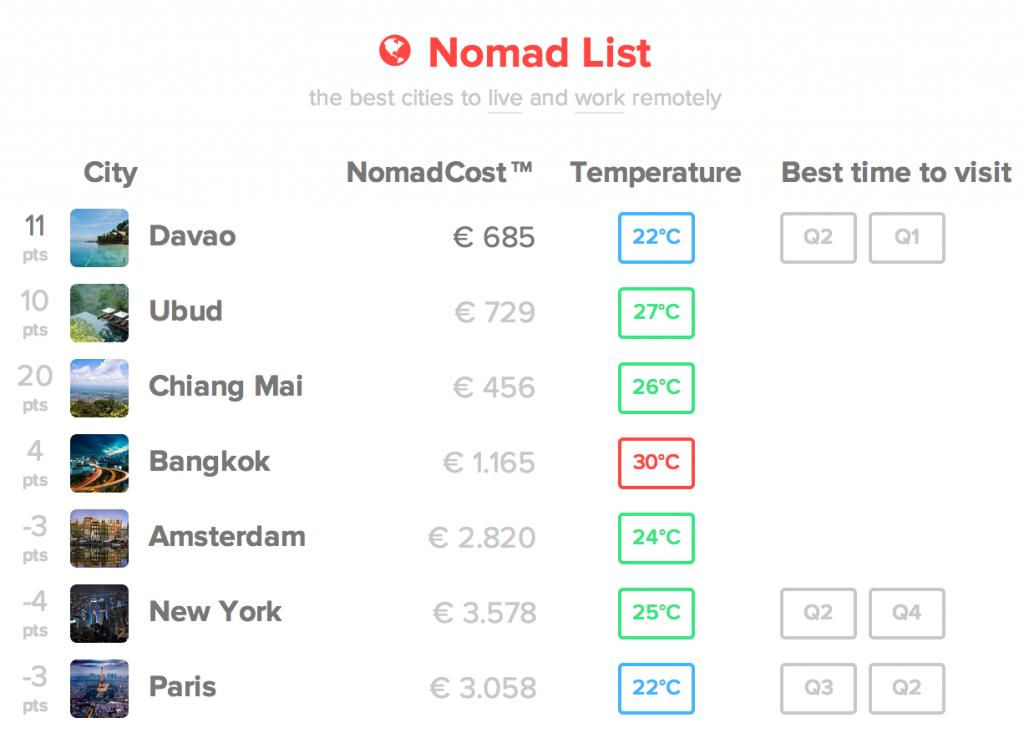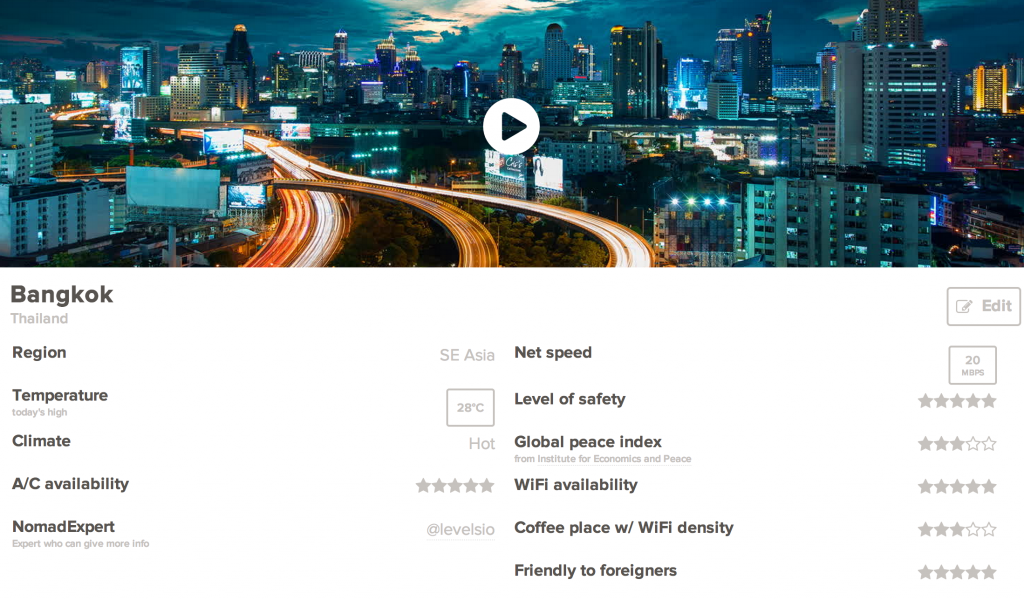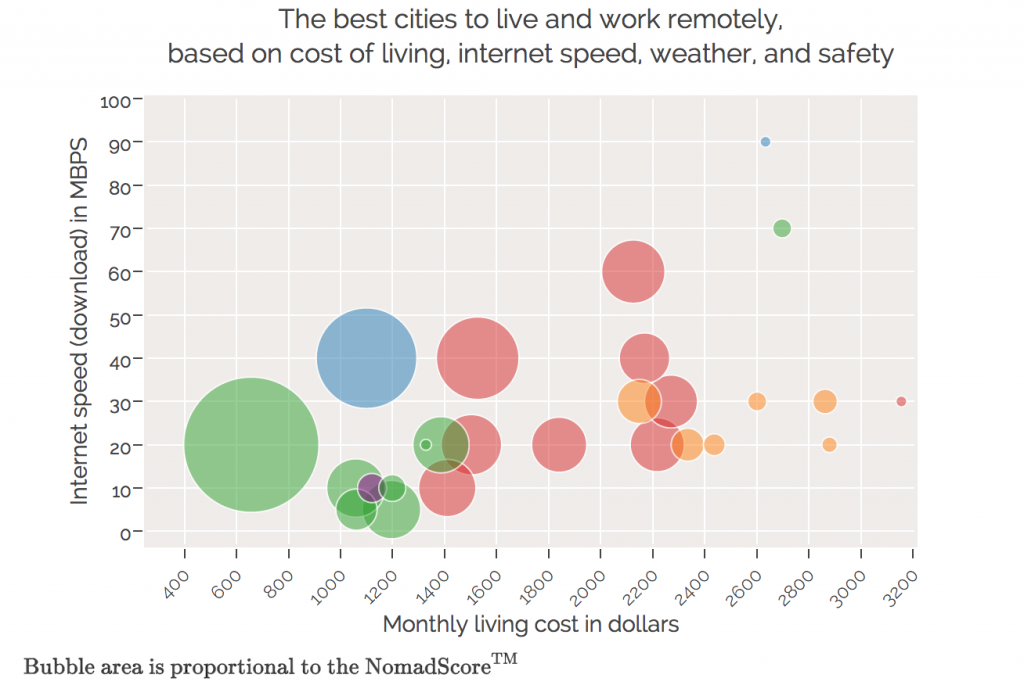It’s been a crazy two weeks. I just launched my 4th startup called Nomad List as part of my goal to launch 12 startups in 12 months. They’re all minimum viable products, built to test a hypothesis and see if they can get a market fit in a month.
They’ve all been doing relatively well. 1) PlayMyInbox got covered by MTV and Lifehacker, 2) Tubelytics was quickly adopted by some big media brands while 3) GoFuckingDoIt went completely viral and was featured all over the media including TheNextWeb, AppSumo and WIRED.
This month’s startup definitely went the best of them all though. And it might be the most successful thing I’ve built since I started my YouTube network Panda Mix Show years ago. Which feels absolutely insane!
Be warned, this is probably my longest post yet. But it’s fun since it shows you how this project went from nothing to something and everything that happened in the course of building and launching it.
The problem
While traveling and working from different places in the world I met lots of other people doing the same thing. They were freelancers, remote employees or startups founders. I knew some cities had entire communities doing this like Chiang Mai, but it was hard to figure out what other cities would be suitable. I heard for example some people trying to do this in Medellin in Colombia and Ubud in Bali, Indonesia. But what other cities? I thought we needed a city index for remote workers.
The solution
So I wanted to make a simple list of cities that were good for this kind of lifestyle. The primary factor for people that take part in this lifestyle is cost of living and quality of living. So I started collecting data on this for different cities. I knew I couldn’t collect 50 indicators for 50 cities myself, as that’d be 2,500 data points to complete. I also knew I had to start out as basic as possible to test demand first.
A crowdsourced spreadsheet as an MVP
Instead of building a site first, I simply made public Google spreadsheet to collect the first data and see if there’d be interest for this at all:
Help me build the definitive list of locations for digital nomads+remote workers, edit w/ me https://t.co/Nqb4eyEAmu pic.twitter.com/DMnVPaYi88
— levels.io (@levelsio) June 24, 2014
I was slightly stunned by the response. Apart from filling in all the data, people started adding columns for different indicators, like level of safety, coffee shop density and LGBTQ-friendliness:
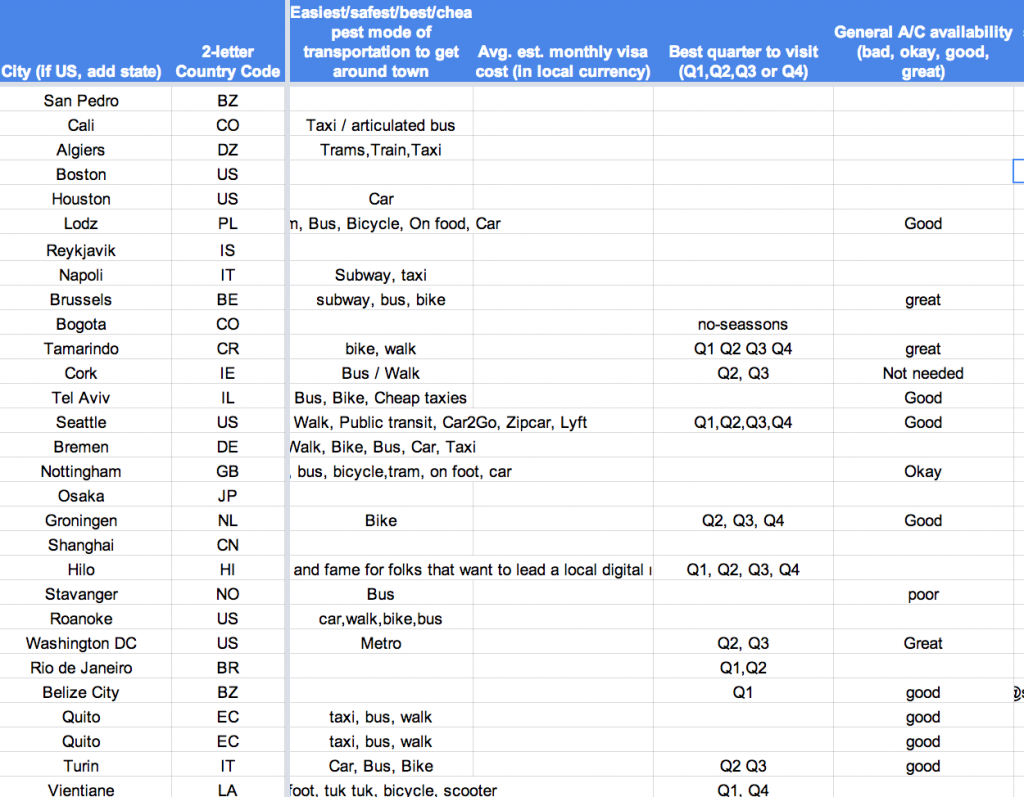
It quickly filled up and with Twitter going crazy about just a spreadsheet list, I had just answered the hypothesis if there’d be interest for this. There was some proprietary data people put on there which I deleted (like Numbeo) and made sure it was all crowd sourced public (and open) data.
Building the site
I started building it. Inspired by BetaList, and it literally being a list, I thought of RemoteList or Nomad List. I actually asked BetaList’s founder Marc to pick one, and he said Nomad List would be better brandable. So it was. While building it, I took a lot of design cues from ProductHunt. I liked its clean and minimal look. I came up with this:
I kept the main indicators in a clickable list, which expanded into more data:
I sent it around to a few friends with Ben Drucker from Valet.io giving great feedback on the user interface and helping build it.
Calculating NomadCost
The list featured cost of living. But this cost of living would have to be based on a typical nomad though. How do they live? Taking cues from myself, I stay in a single private room in a hostel or cheap hotel, sometimes rent a 1-bedroom apartment if I stay longer. I eat outside 3 times a day (cause I don’t have a kitchen), have drinks with food and will go out maybe once a week. Having only meal prices, I simulated the other ones by making it a % of a basic meal’s price, which works about right for now. I know there’s always more stuff to pay for, but these are the very basics. To make it official, I called this NomadCost.
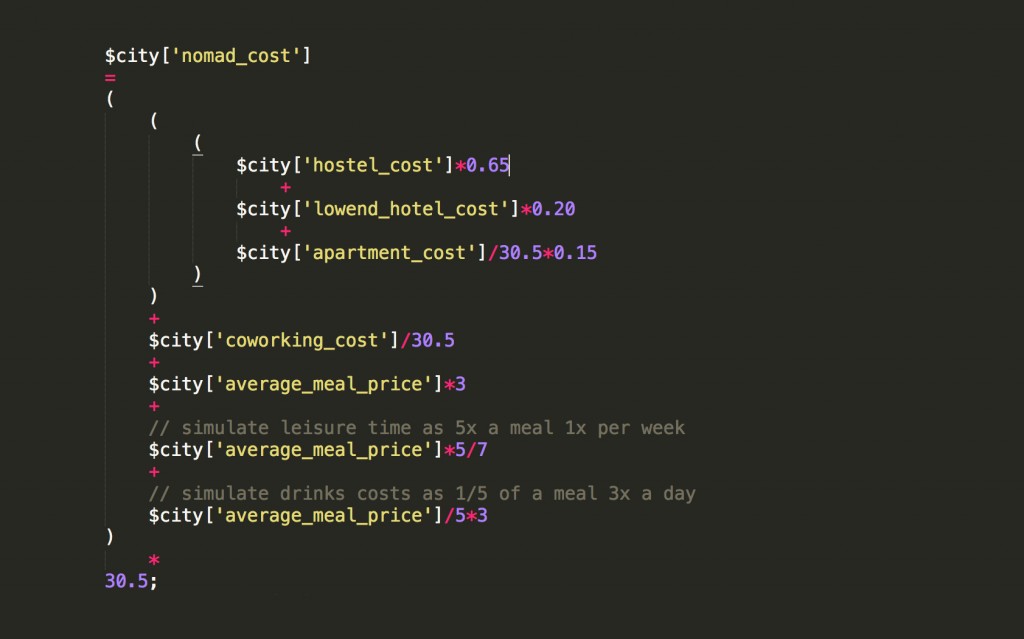
Creating a scored leaderboard of cities
Wanting to make it like a leaderboard with points like Reddit, I needed to score the locations. Just ranking them by cost of living would be too basic. So I made a formula that added up scores. I wanted the cost of living to be the most heavy weighted part of this though, so I started with that. The cut off point for me would be 2000 EUR of cost of living per month, after which it would the score would become negative.

Then I added different indicators to the score, like temperature. Since most nomads like warm weather, this affected it positively. That’s not perfect though since some people like to e.g. snowboard and work, but this works for now:
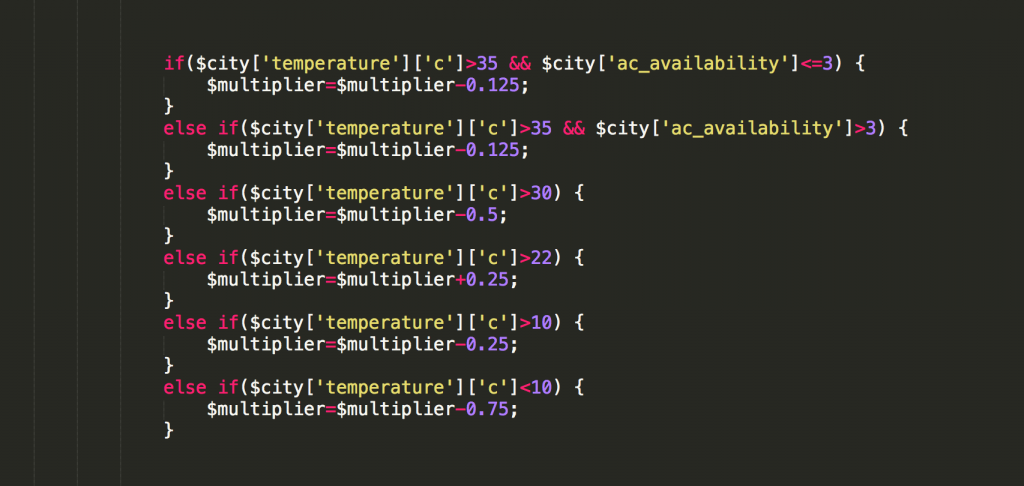
I’m definitely not a data scientist, so this was the easiest way I could do this. I kept tweaking the weighting of everything until it felt the leaderboard made sense.
Accidentally launching it
On June 24, I posted the link to the spreadsheet on Twitter. About a month later on July 29 I had to reboot my Linode server and since I had accidentally uploaded my local nginx.conf file to my server, suddenly the site went live. I didn’t know until I suddenly started getting lots of tweets. The same day, a feature on TechInAsia about me went live. Then without me knowing, Emiel Janson submitted it to Product Hunt.
I was planning on doing a dedicated launch a few days later, but with all this happening without me doing anything, I’d figure to just run with it. Yes, that’s the accident!
What happened
I went out to relax after all this work. Then I came back…
Come back from partying in Manila to see http://t.co/X9EjpSkZNu #1 on @ProductHunt, feels like a dream again, so happy 🙂
— levels.io (@levelsio) July 29, 2014
Nomad List had gone straight to #1 on Product Hunt.

It turned out to be the #5 most voted Product Hunt ever.
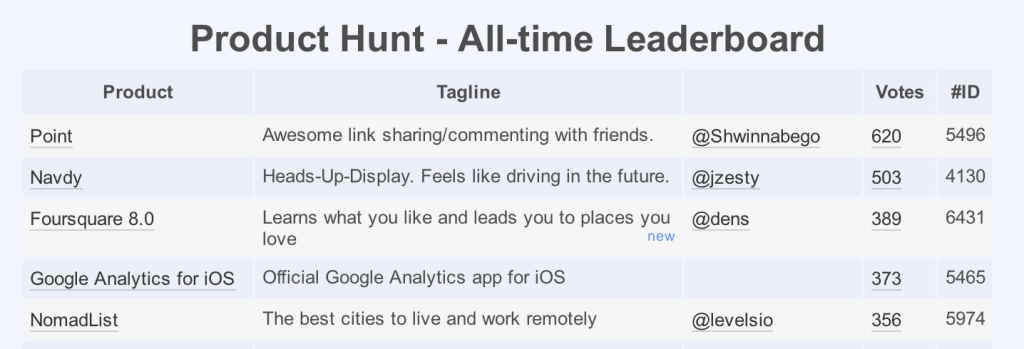
Then I submitted it to Hacker News and bam, it went straight to #1 there too. I was stunned once again. And unlike usual Hacker News, most comments were positive.

To give you an idea, Hacker News still gets you 4x more traffic than Product Hunt. Since it’s hard to see referrers these days, I have to estimate based on the referral data I did get. Hacker News gets you about 50,000 unique visitors and Product Hunt about 12,000.
Press
I’ve never had anything in my life that got so much press coverage. Forbes, Business Insider, Inc.com, TheNextWeb and LifeHacker wrote about it and it was shared by Tim Ferriss, Joel Gascoigne from Buffer, Matt Mullenweg from WordPress/Automattic and the team at Odesk. To give you an idea, I submitted it to TheNextWeb only. The rest happened organically. I guess that means people liked it.
Metrics
Here’s the metrics for the last 2 weeks the site has been up:
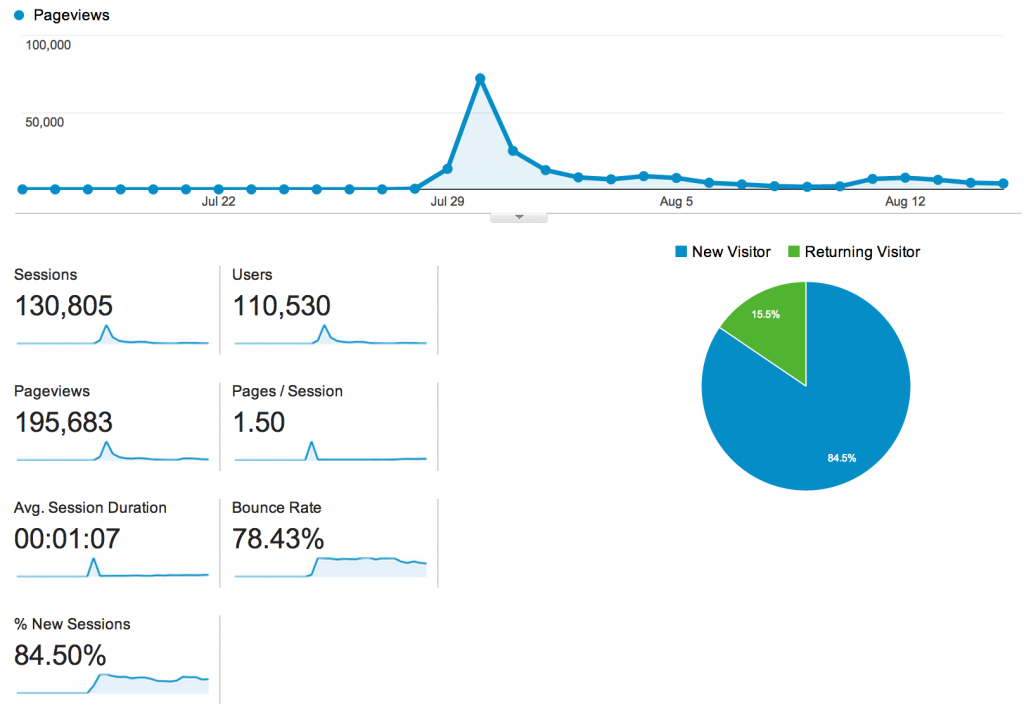
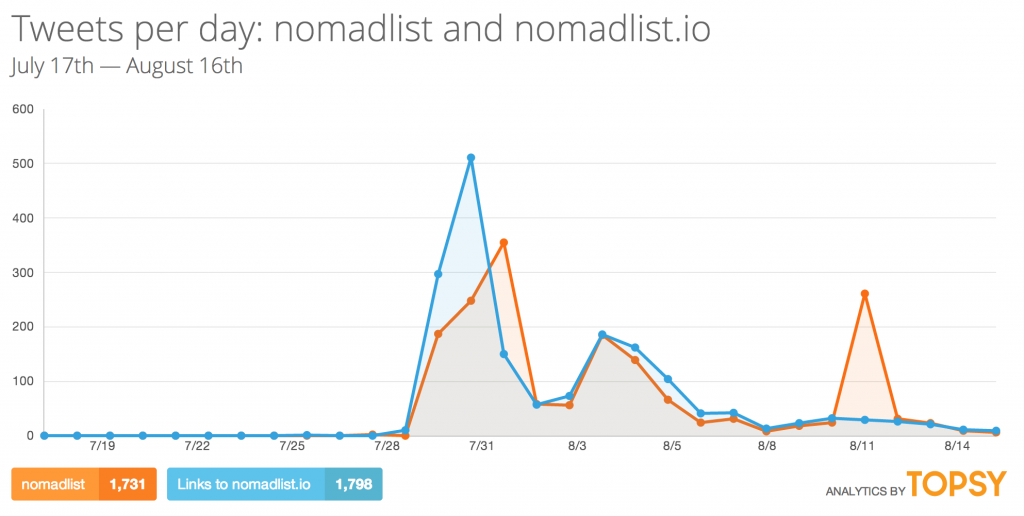
I’m especially happy and intrigued that there’s no real drop off of users. I’m consistently getting ~3k uniques and ~5k of page views daily. So there might be real recurrent interest in this.
In addition, I’ve managed to funnel many people to my Twitter, making future product launches slightly easier:
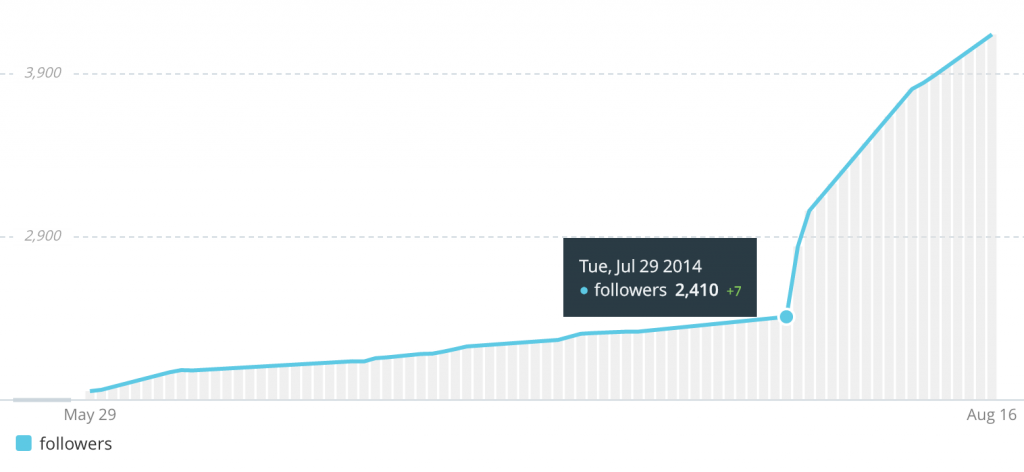
And LinkedIn:

Profitable from day-one
In the first 24 hours of launch, I got an email from Matt from Automattic:

He was looking for remote workers, so this seemed like an awesome fit. I quickly put up a listing for him:
The sponsorship would pay per view, which was super generous and awesome making this project profitable from the first day.
I received a lot more offers to advertise or sponsor the site, but I really want to make sure it’s with a company that fits the site and doesn’t bring it down. I could put AdSense on it, but AdSense looks ugly as hell and I hate bad ads myself.
So except for an ad like that, how do you monetize a site like this? My startup friend Robin told me not to focus so heavily on monetizing now but instead focusing on growing this long-term. I agreed.
I did need to make sure I could record those people interested though since this momentum would be temporary. I’d want to monetize the user base later. I quickly added this box to the top of the page:

I was able to get ~2,500 emails in 2 weeks. But I didn’t put it up until the 2nd day. About 5% of people subscribed. Seemed a bit low to me but to be honest, I don’t like giving my email to some random site either.

API
After many requests for data in the first week, I wrote a quick API (just a JSON wrapper of the data really). That resulted in plot.ly analyzing the data, someone building an unofficial Android app and a lot more data visualizations.
Business models
I had some business models I wanted to test in the coming months though: 1) Selling city-specific guides to set up as a remote worker, stuff like where to work, where to stay, how to stay safe, where to meet other nomads, how to legally register a business etc. 2) Launching a NomadKit bundle for remote workers they can get before they land in a new city. Think like before flying to Bangkok, you can get a SIM card, coworking space pass, hotel near the space, nomad guide, and transit card. Hacker News also believes this is the “killer app” here:
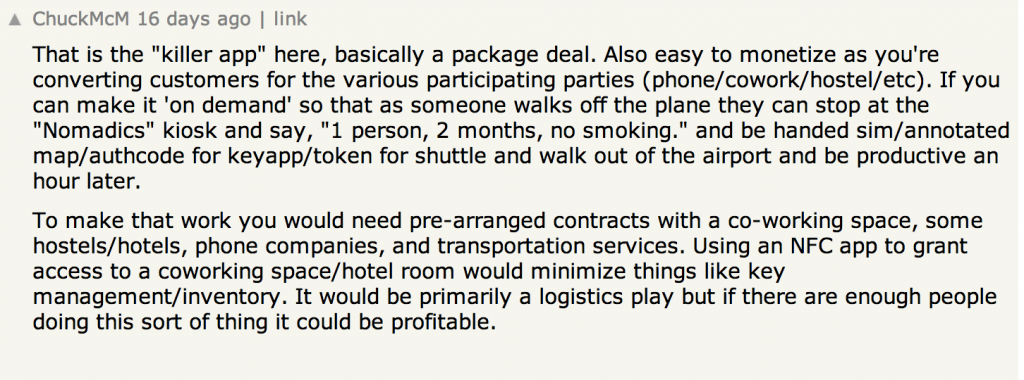
Asking for feedback
Except for those two, what else could I do to monetize this in the long-term? Ben told me to ask the users directly. So I emailed 2,000 people on the list:

I got over 400 answers (!) and 50 email replies; that seemed impressive. To keep this open, you can see the answers here.
Both Marc and Ben helped me analyze the data.
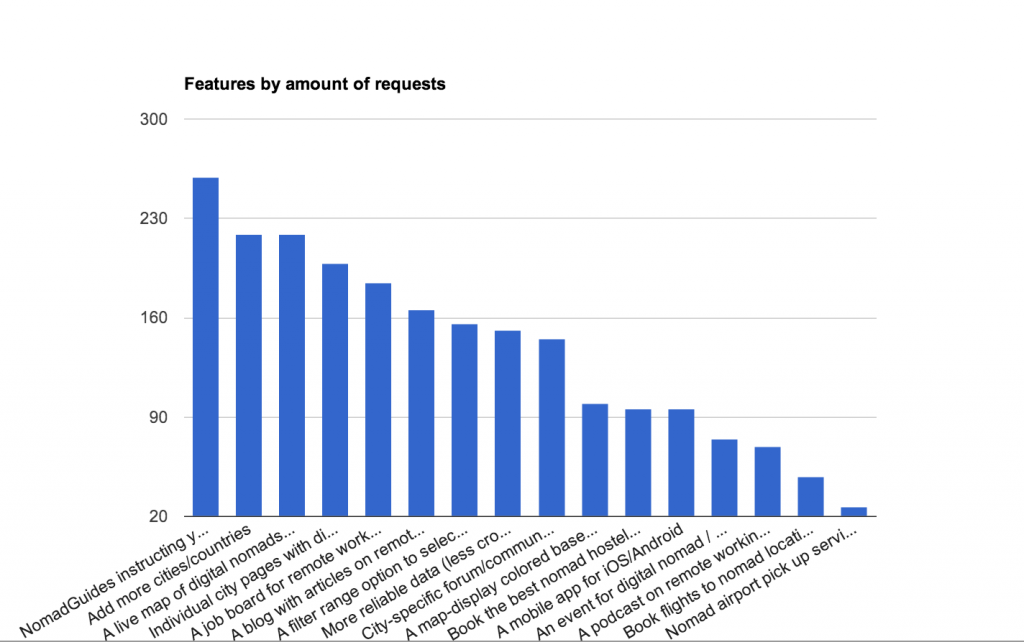
Definitely the most requested were NomadGuides. I quickly followed up on their other requests though, adding 100 more cities in the first week, individual city pages and a filter range selector. A live map of nomads sounds interesting, as well as a remote job board and city-specific discussion boards.
The price for the NomadGuide had to be at either $10 or $25:
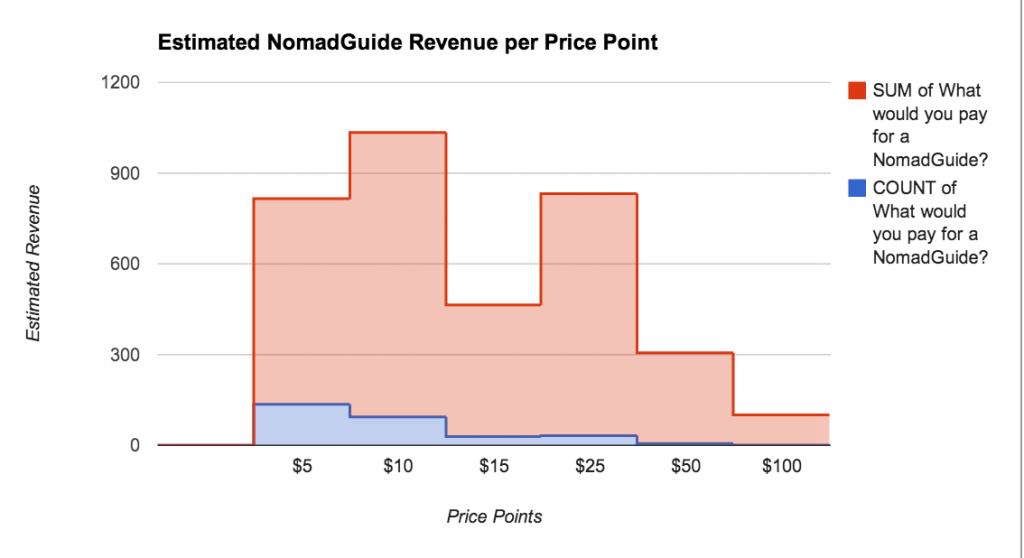
And I had to start writing a guide for Chiang Mai, Bangkok and Bali first:
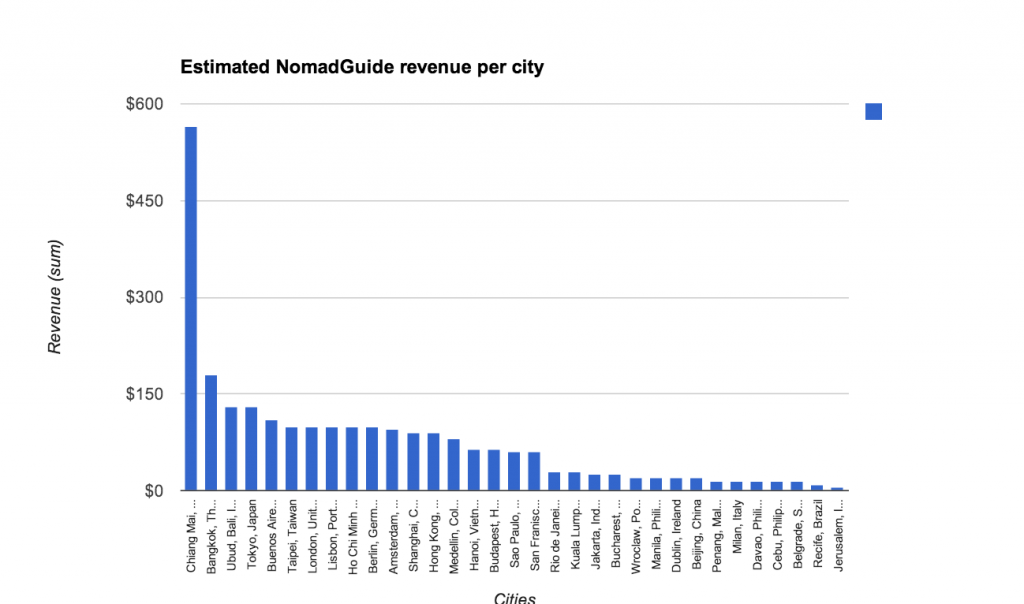
The price for the NomadKit bundle (without hotel stay) would have to be around $50. That’d work as a SIM card could be $10, a Nomad Guide could cost $10 and a coworking day pass you can get for free to promote the space. So your profit margin would be about 60%. Adding a hotel stay for $25 though, you could push that to $75 or $100. That’d still be a nice margin of ~50%.
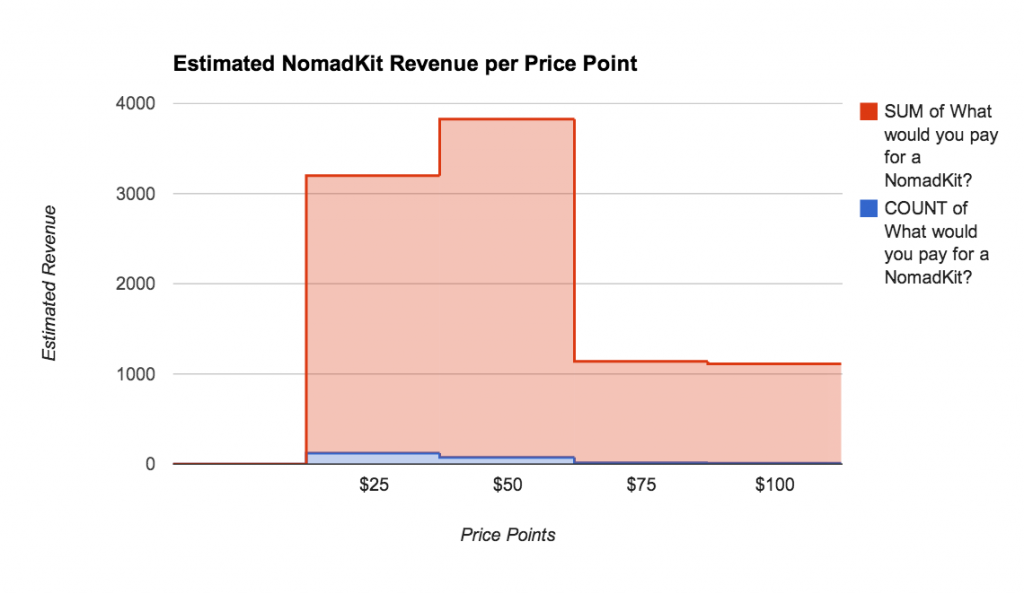
Other features people entered:

Think bigger
In terms of business model, I think we can think bigger though. I’m increasingly feeling I’m on to something here. Every time I post something about remote working, it takes off like crazy. I’ve said this before, this lifestyle is not limited to crazy Tim Ferris type renegades anymore. It can be anyone who can do their job with just an internet connection. And increasingly that’s becoming every job out there. A lot of people are getting sick of city life with commutes, traffic, rapidly increasing costs of living in the big cities and pollution everywhere. So they want an alternative. Also, you see more and more startups having a distributed team from the onset. Cause it saves renting an office and life quality outside the Bay Area is A LOT better if you’re not making money yet.
Even Marc Andreessen believes nomadism is the future:
@NaithanJones @pmarca @hyetigran Hence @levelsio 's Nomadlist.io etc. (croudsourced, open) are important @ProductHunt http://t.co/piQbKYORgJ
— Kartik Parija (@KartikParija) August 5, 2014
@NaithanJones @hyetigran Smartphone-powered nomadism is going to be very interesting.
— Marc Andreessen (@pmarca) August 4, 2014
In short, I think in the future people will spent a large part of their time around the world to work everywhere, save money, travel and have a better work/life balance. I don’t know if we’ll completely discard living in one place though since I think I’m realizing while having this lifestyle that you need at least some sense of community (e.g. friends, family in one place).
I think I’ll just keep pushing at this though, seeing where it goes. I’m definitely interested in building a business around this movement that’s taking off now.
I’m also looking for other people to join me here though. I think with this idea, I can’t really keep working on it alone. So, let me know if you’re interested in joining or helping out!
Conclusion
Before I forget. Let’s answer the question in the title. How did I do this? Well I think by just building it while actively listening to user feedback and being completely open about it. Eric Ries was completely right. Talk to users. Develop with and for them. It works.
Remember though that being #1 on big tech sites doesn’t mean you’re on top of the world. You need to have a way to funnel this traffic to help you reach your goals.
Well okay, I admit, for a few days, it feels like you are on top of the world 🙂
P.S. I'm on Twitter too if you'd like to follow more of my stories. And I wrote a book called MAKE about building startups without funding. See a list of my stories or contact me. To get an alert when I write a new blog post, you can subscribe below:
